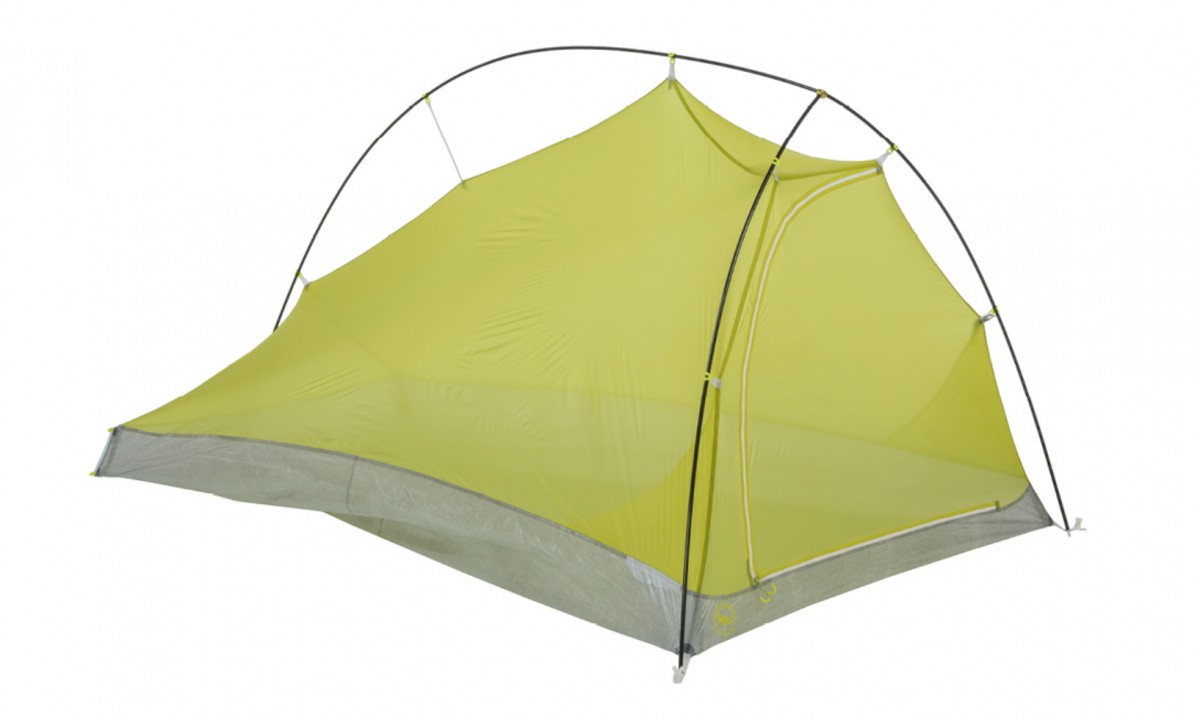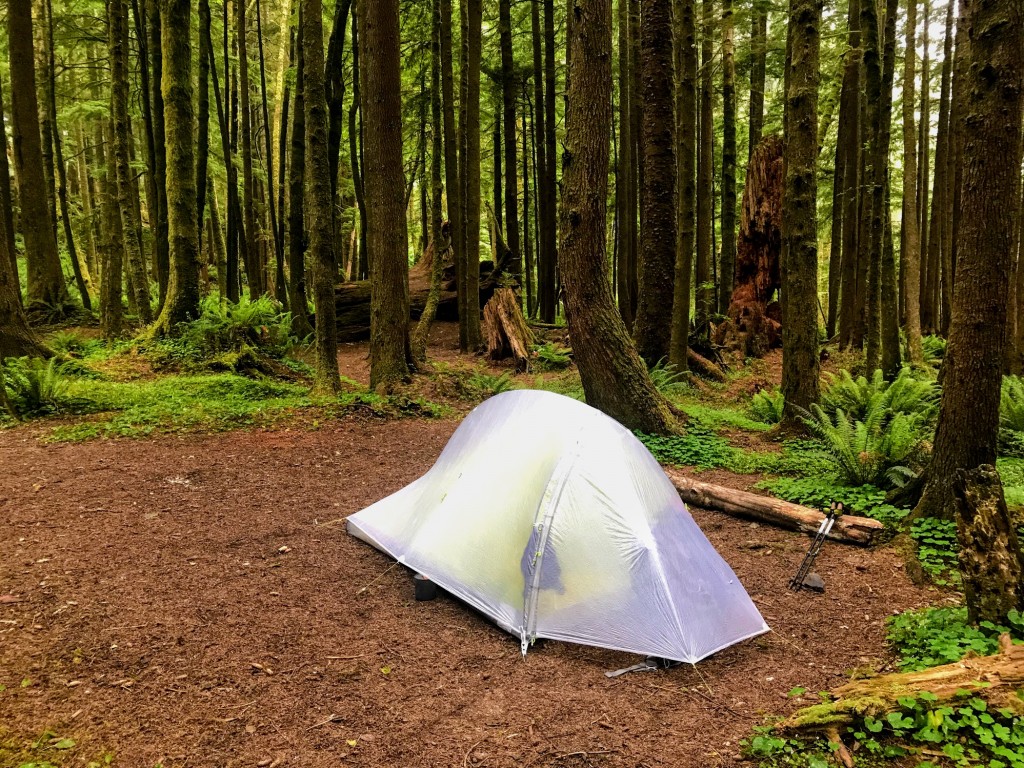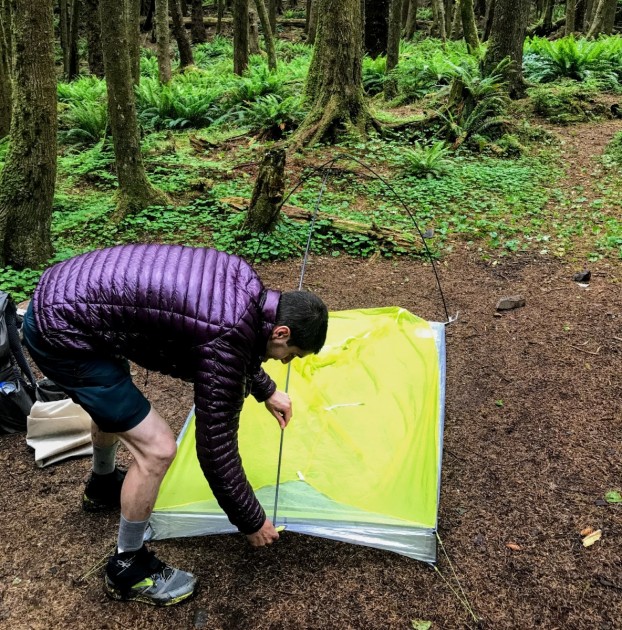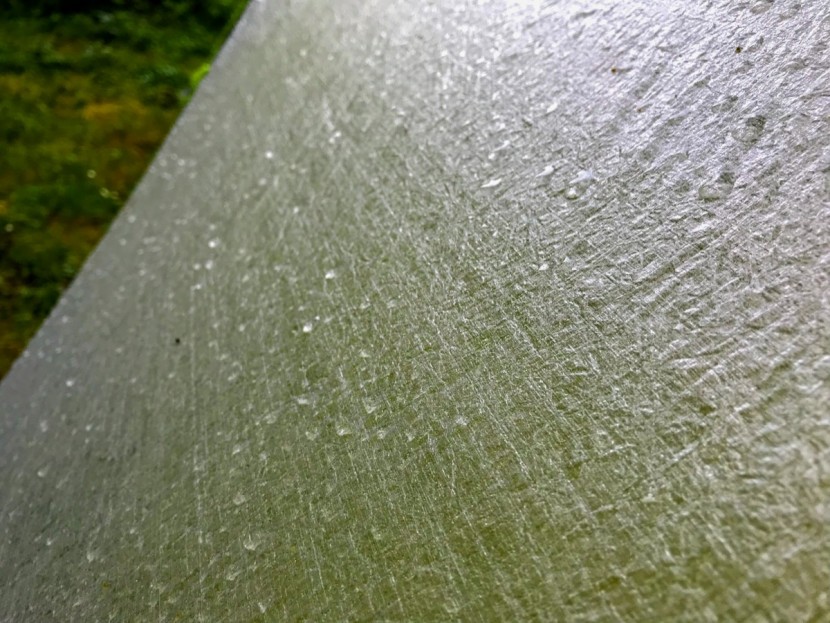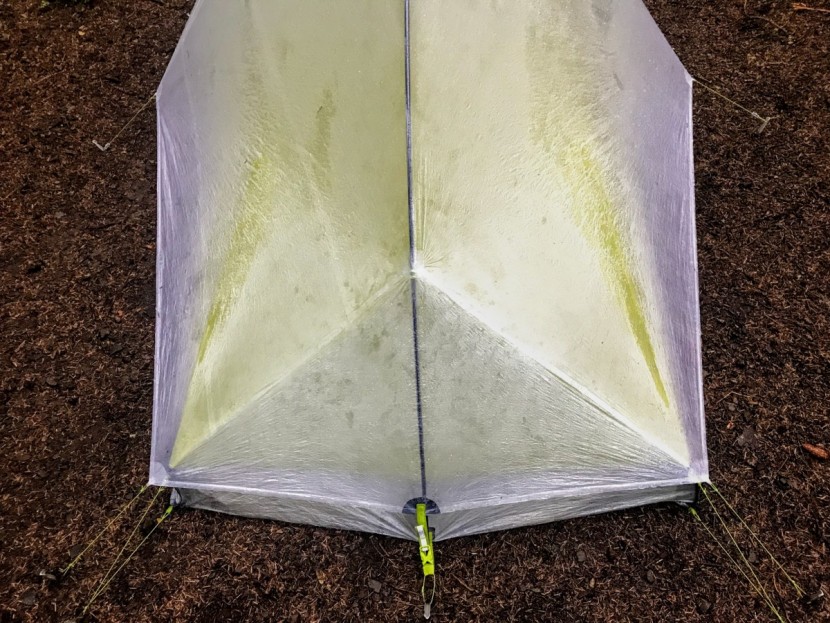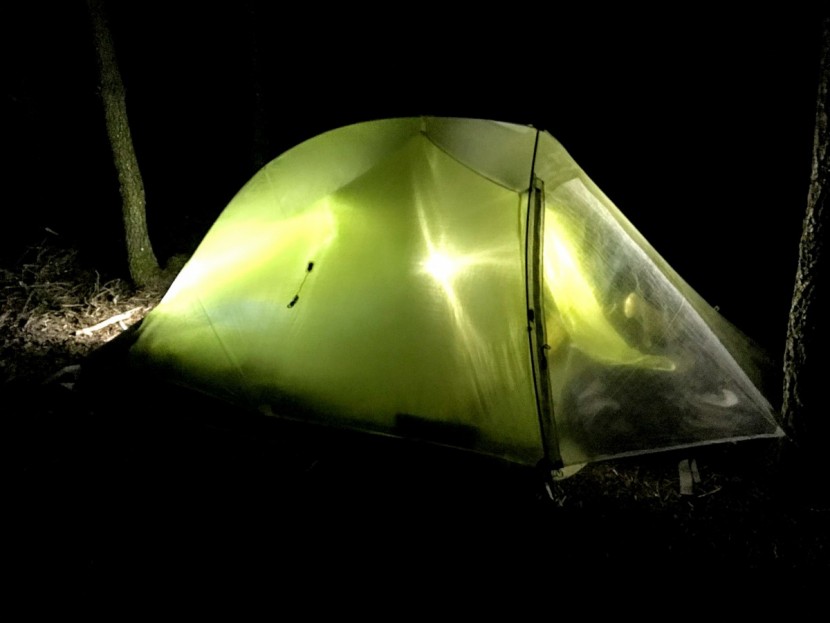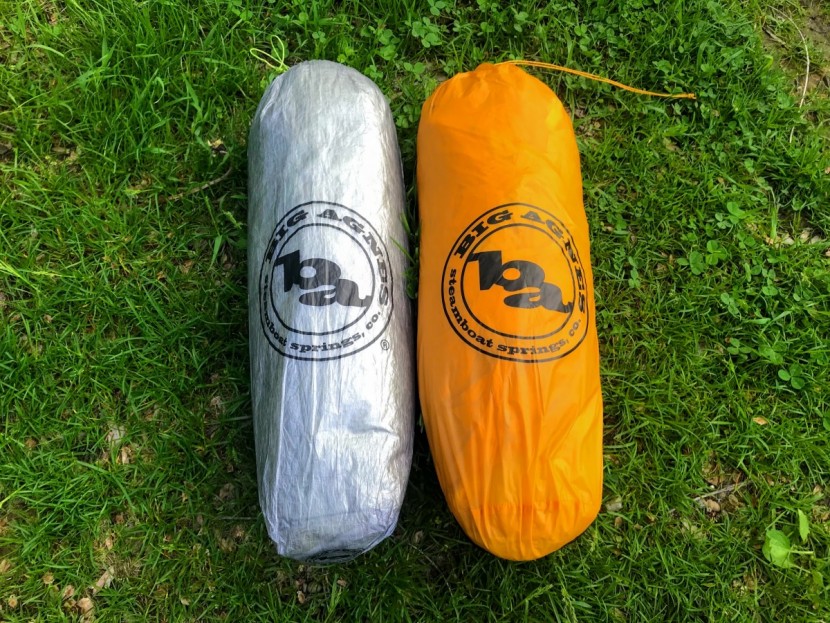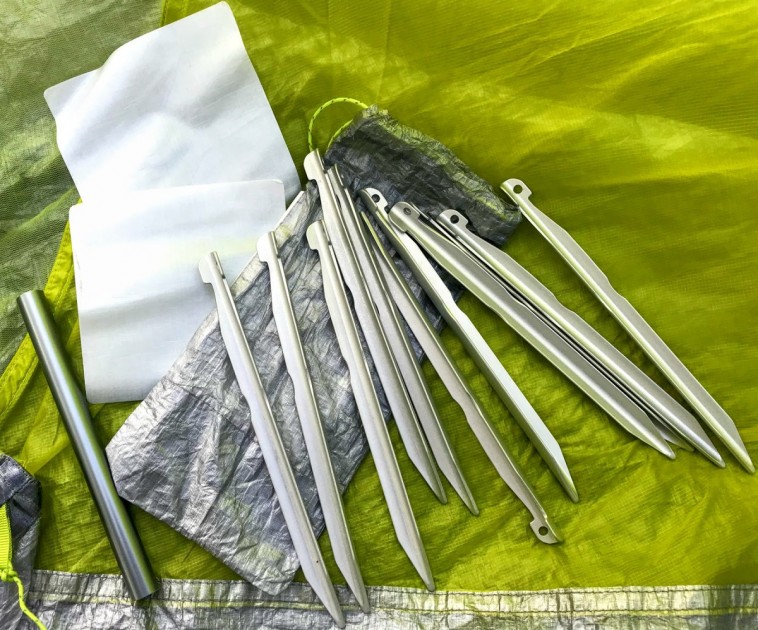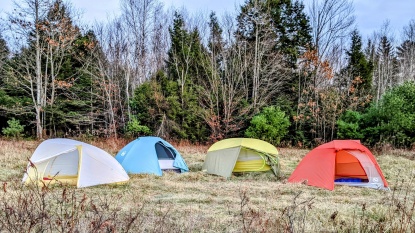Big Agnes Fly Creek HV 2 Carbon Review
Our Verdict
Our Analysis and Test Results
It's a dedicated pole tent with the soul of an ultralight tarp. Minimalist in almost every sense, it could be a distance hiker's closest companion. Testing confirmed the exceptional weight and packability of this model but also showed that it just isn't comfortable for two average-sized people.
The Big Agnes Fly Creek HV2 Carbon blows the competition away when it comes to weight, but going all-in on that metric leaves us wanting a little more from it in other areas.
Comfort
The minimalist approach to this tent means that camper comfort isn't a top priority. One thing that immediately became clear is that this tent is very tight for two people. Even though its maximum length (86"), width (52"), and height (40") all seem on par with other models in the category, the interior architecture does not maximize livable volume. Looking down the length of the tent, the sides are a steep triangle, and lateral space is at a minimum.
In fact, one of the pole clips has a comically long piece of webbing that attaches it to the tent canopy, which seems to reduce space significantly. Even with just one sleeper, the feet of a six-foot-tall person touch the end of the tent when lying down. With two people, it proved to be challenging to sit up comfortably, and doing it at the same time, to say, eat dinner, will mean that heads are rubbing against the canopy.
On top of that, the single front door isn't our favorite orientation; if you are primarily planning to use it solo, then this is much less of an issue. In terms of storage, three pockets are all very modestly sized; one on each side (mostly for quick headlamp access) and a slightly larger one overhead. With this tent, you have to rely on the privacy that the backcountry affords because the tent itself is not going to shield you from others at the campsite. Both the green canopy and the fly are opaque, but you can still easily make out human forms on the inside of the tent. This tent is meant for carrying and sleeping, not for living. It feels even more cramped than other ultralight contenders.
Ease of Set Up
Set up is simple enough and relatively standard for a semi-freestanding model. The single, Y-shaped pole slides into three grommets, one at each of the two front corners and another at the center rear of the tent body. The pole structure attaches to clips on the tent, and super fast. As an aside, we didn't find that it affected set up, but the pole clips on the tent body seem like they aren't quite the right size for the poles; they don't snap into place, they just kind of rest around the pole.
The foot-end corners need to be staked out for the tent to achieve full volume. From there, the fly attaches easily, and color-coded clips make it simple to orient correctly. The tent comes with 11 stakes, which seems like a lot for a minimalist tent. This tent is about as easy as they come to pitch.
Weather Resistance
The 11 stake points do help quite a bit with stability, and perhaps this is why Big Agnes opted for this design. The pre-attached guy line adds even more support. One detail we noticed is that there are no Velcro tabs on the underside of the fly to attach to the tent poles as there are on many other tents.
On the plus side, the Dyneema (cuben fiber) floor and fly don't have any seams. The bathtub floor is fairly shallow, but the fly stakes away from the tent at almost every point. We had a few minor issues with splashback at the foot, but for the most part, stayed nice and dry. The vestibule stakes out at two points, adding more stability and making it easy to tension properly.
Durability
We have seen plenty of thin-denier tents in our day, but Big Agnes goes so far as to say that the Fly Creek HV2 Carbon requires special care. Consistent with its minimalist design, the reinforced sections in high-tension areas are smaller than the typical tent. Also included are two reasonably large squares of self-adhesive repair patches, suggesting that you should at least consider the possibility that you could put a hole through the floor at some point.
The tent came out of testing unscathed; however, the pole bag, which is made of the same material, showed signs of pinhole wear (we think from rubbing against a pack all day).
Weight and Packed Size
Maximizing minimalism is why this tent got made. Its Dyneema fabric feels simultaneously as high tech as something you would find insulating a space capsule re-entering Earth's atmosphere, and as disposable as the foam liner you might find in electronics packaging.
In any event, if you are committed to the idea of the dedicated-pole tent, this is hands down the lightest one that we have ever come across. We wouldn't hesitate to take it solo camping (in fact, we think that is where it performs best), and if you are willing to tolerate the squeeze that comes with snuggling up next your hiking buddy, you'll each be looking at a somewhat mind-bogglingly low carry weight of less than three-quarters of a pound each.
Nothing else in this category is going to come close, but if you want something approximately comparable in terms of weight (but with way more room and a less eye-popping price), there a few other contenders worth considering.
Value
With this tent, you are getting top of the line ultralight materials. However, from a user perspective, we can't find a way to justify the expense. Our philosophy is usually that it is better, in the long run, to invest in a high-end piece of equipment that you plan to have for a long time, but in this case, we think the value isn't quite there. At this price point, you could buy at least two stellar tents that are between 2-3 pounds. For the truly dedicated ultralight or distance hiker, there are plenty of value options in our ultralight tent review.
Conclusion
The Big Agnes Fly Creek HV2 Carbon. We applaud the effort for pushing the boundaries of material engineering. After all, you don't know where the line is until you cross it. However, we think that this tent crosses it. This model could be right for the ultralight ultra-enthusiast with cash to burn, but we think most folks would opt for something at least a little roomier and a little more affordable.


